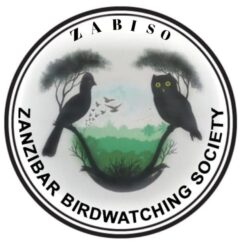Birds that migrate through the African-Eurasian Flyway can be divided in three main groups: Waterbirds, Landbirds and Birds of Prey (Raptors). Zanzibar archipelago is of critical importance to the conservation of waterbirds.
Throughout their migration, these birds are facing various threats, from habitat loss to illegal killing, most of them being anthropogenic (caused by huma activities) such as pollution. While the impact of climate change on migratory birds is difficult to assess, we are already seeing changes that might provide an indication of what the future holds. For example, scientists have observed that some birds that breed in the Arctic are getting smaller because their typical food pattern is disturbed. These birds from the Arctic have to start their migration to East- Africa with an empty stomach, and thus have smaller chances of survival.
Conserving migrant birds is a global challenge that is addressed by the Convention on the Conservation of Migratory Species of Wild Animals (CMS), an environmental treaty under the aegis of the UN Environment. CMS brings together countries and the wider international conservation community to achieve coordinated conservation and management of migratory animals (amongst other birds) throughout their entire distribution ranges.
The West Asian – East African Flyway, connecting the Saryarka – Steppe and Lakes of Northern Kazakhstan (a key stopover point for migratory waterbirds on their way from Africa, Europe and South Asia to their breeding places in Western and Eastern Siberia) with the Lake System in the Great Rift Valley and coastal areas. Billions of birds are found to travel from northern breeding grounds to African wintering places.
Waterbirds are species ecologically dependent on wetlands for at least part of their annual cycle, including many species of divers, grebes, pelicans, cormorants, herons, storks, rails, ibises, spoonbills, flamingos, ducks, swans, geese, cranes, shorebirds, gulls, terns, tropic birds, auks, frigate birds and even the African penguin. The main threats faced by waterbirds are habitat loss, illegal killing, collisions with aerial structures and electrocution by power lines. Some soaring waterbirds such as storks concentrate during sea crossing at bottleneck areas – such as at the Strait of Gibraltar, the Bosphorus, etc.
The Agreement on the Conservation of African-Eurasian Migratory Waterbirds (AEWA) is an independent intergovernmental Treaty dedicated to the conservation of migratory waterbirds and their habitats across 119 Range States in Africa, Europe, the Middle East, Central Asia, Greenland and the Canadian Archipelago.
All 255 AEWA species cross international boundaries during their migrations and require good quality habitat for breeding as well as a network of suitable sites to support their annual journeys. International cooperation across their entire migratory range is therefore essential for the conservation and management of migratory waterbird populations and the habitats on which they depend. Action plans for endangered species are one of the main tools to ensure the future of those species.
See Factsheet Birdlife International for more information about Fly-Way
